I just noticed this and also could not find any documentation about it but I've experimented with this new feature and it works like this. When you first generate NSManagedObject subclass from your Core Data model then Xcode will generate 4 files:
DBUser.h
#import <Foundation/Foundation.h>
#import <CoreData/CoreData.h>
NS_ASSUME_NONNULL_BEGIN
@interface DBUser : NSManagedObject
// Insert code here to declare functionality of your managed object subclass
@end
NS_ASSUME_NONNULL_END
#import "DBUser+CoreDataProperties.h"
DBUser.m
#import "DBUser.h"
@implementation DBUser
// Insert code here to add functionality to your managed object subclass
@end
DBUser+CoreDataProperties.h
#import "DBUser.h"
NS_ASSUME_NONNULL_BEGIN
@interface DBUser (CoreDataProperties)
@property (nullable, nonatomic, retain) NSNumber *id;
@property (nullable, nonatomic, retain) NSString *name;
@end
NS_ASSUME_NONNULL_END
DBUser+CoreDataProperties.m
#import "DBUser+CoreDataProperties.h"
@implementation DBUser (CoreDataProperties)
@dynamic id;
@dynamic name;
@end
So as you can see now all properties are in a separate file with category (CoreDataProperties). Later if you generate NSManagedObject subclass for the same model Xcode 7 will regenarete only 2 files with category (DBUser+CoreDataProperties.h and DBUser+CoreDataProperties.m) to update all properties from your model but it will not make any changes to 2 other files (DBUser.h and DBUser.m) so you can use these 2 files to add there some custom methods or properties etc.
In previous version Xcode generated always only 2 files (DBUser.h and DBUser.m) and it put properties there so you could not easily modify these files because your custom implementation was deleted everytime you regenerated your subclasses. Therefore it was a common practice to manually create a category and put your methods in your category which was oposite to what we can see in Xcode 7. That however had many disadvantages because we had to use a category for implementation of our methods which does not allow to do certain things and now we can easily modify the main interface and implementation files which allows us to do anything with it. Hurray!
